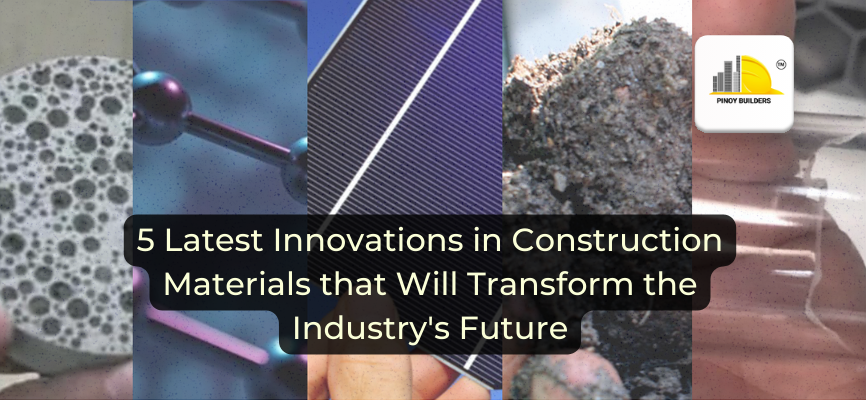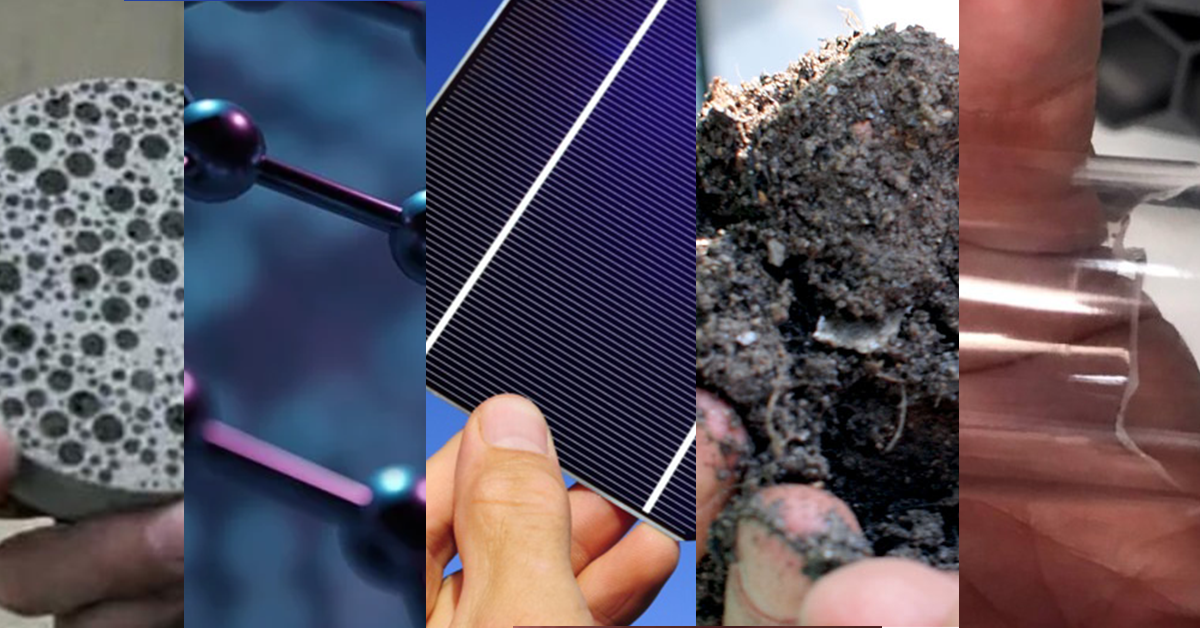Our understanding of construction materials and their environmental impact has never been stronger than it is now. Building materials are getting more and more sophisticated, advanced, and futuristic. Nature inspires some, while others are entirely novel and constructed from practically newly developed materials.
In this article, we’ll look at a few construction materials innovations that have the potential to transform the construction industry in the future.
Self-healing Concrete
Photo Courtesy: The Constructor.org
Self-healing concrete is a brilliant invention in the building construction industry. Its application can prevent deterioration well before the end of its service life.
Since 2006, the Civil Engineering and Geosciences Faculty in Delft has been working on self-healing concrete, which is made by mixing a healing agent or bacteria into the concrete to convert nutrients into limestone. The goal of this research is to look at the self-healing properties of plastics, polymers, composites, asphalt, metals, and concrete
Hendrik Jonkers, a Dutch scientist, is the first person to make self-healing concrete, which is a product that, even though it costs more up front, could save money and work in the long run. For his creation, Hendrik Jonkers received a nomination for the European Inventor Award of 2015.
How does self-healing concrete work?
Self-healing concrete, to put it simply, is concrete that can fix cracks and defects on its own. Structural integrity is a fundamental consideration when using concrete in building. As a result, a lot of time and effort is spent ensuring that the concrete is in perfect condition. To stay in top shape, self-healing concrete does not require human intervention.
Self-healing concrete, unlike regular concrete, contains bacteria called bacillus pasteurii, as well as a type of starch that serves as food for the bacteria.
Self-healing concrete, unlike conventional concrete, contains bacteria called bacillus pasteurii, as well as a type of starch that the bacteria consume. These bacteria remain dormant in the concrete until a crack appears and allows air to enter. This change awakens the bacteria, causing them to consume the starch added to the concrete. Bacteria excrete calcite, a kind of calcium carbonate, as they eat, grow, and reproduce. The calcite fills and seals the crack when it bonds to the concrete.
Where are we in its technology?
Self-healing concrete has the potential to reduce cement production in the future. Cement production handles 8% of global carbon emissions. The current development only allows for a paltry amount of concrete to be healed, as it only heals up to 1mm broad. Further research is being carried out in order to keep the technology up to date and available on the market.
RELATED: What a Decarbonized and Regenerative Future Looks Like According to First Balfour
Graphene
Photo Courtesy: Science Alert
Is concrete supremacy about to end? The Nobel Prize for Physics in 2010 was awarded to Konstantin Novoselov and Andre Geim of the University of Manchester for their discovery of graphene, a new two-dimensional substance.
Graphene is formed from graphite, which is found in pencil tips. It is a material with remarkable properties that comprises a single layer of carbon atoms. Because of these, graphene can justifiably be called one material of the future, capable of being employed in construction as well.
How does graphene work?
Graphene is the “ideal additive” for cement and concrete because of its great traction and tearing resistance. The Graphene additive extends the life of concrete by increasing important features, such as resistance to carbonation, chlorides, and sulfates. This can use less natural resources and cut down on carbon dioxide emissions from the extraction, handling, manufacturing, and transportation of raw materials.
Graphene also improves the flexibility of the finished material, which in this case, is concrete or cement. They can also use it in unique structures, including bridges, tunnels, dykes, industrial plants, and harbors. It’s beneficial in marine structures, where “concrete is constantly subjected to sulphate and chloride attacks.”
Where are we in its technology?
Several companies are eager to exploit these qualities in building materials, with a recent partnership between scientists at the University of Manchester and a contractor promises to enhance its application in concrete
Today, graphene is available in relatively large quantities commercially, with some of the larger manufacturers capable of manufacturing 100s of tons in powder form each year, though the quality of the end product varies.
RELATED: Go Tiny: Designing and Constructing a Sustainable Tiny House
Photovoltaic cell
Photo Courtesy: Iberdrola
A global green energy revolution is underway, with solar energy leading the pack among renewable energy sources. Solar photovoltaic (PV) panels are without a doubt a great advancement in solar energy generation. Photovoltaic cells have a wide range of benefits.
Solar PV cells produce power by absorbing sunlight and converting it into electrical current. A single solar panel has many photovoltaic cells, and the current generated by all of them adds up to enough electricity to power your home.
It’s true that solar PV panels have a bright future both economically and environmentally, and there are a lot of benefits to using solar power.
It is eco-friendly.
It helps cut electricity costs and save money in the long run.
Enhance the resiliency and reliability of the electricity supply.
Where are we in its technology?
Solar PV cells now provide energy to individuals living in some of the world’s most remote locations, as well as those in large cities, to pump water, keep the lights on, charge batteries, and give electricity to the grid.
Solar PV cells now provide energy to individuals living in some of the world’s most remote locations, as well as those in large cities, to pump water, keep the lights on, charge batteries, and give electricity to the grid.
Despite the challenges that PV technologies face, they have the potential to be a game changer to achieve our carbon-free goals. According to recent research, accelerated solar PV deployment could reduce CO2 emissions by 21% (almost 4.9 gigatonnes yearly) by 2050, and solar PV might provide a quarter of the world’s energy needs by 2050. To achieve this, however, global capacity must increase to about 20 times current levels (over 8,000 gigawatts).
Transparent Aluminum
Photo Courtesy: Hackaday
Transparent aluminum, also known as aluminum oxynitride, which was formerly only seen in Star Trek, is now a reality with significant real-world applications.
Transparent aluminum is three times stronger than steel, four times tougher than fused silica glass, and 85 percent harder than sapphire. It is also optically transparent, as the name suggests.
Application
The material is resistant to corrosion, radiation, and oxidation, and might make windows and domes for undersea and deep-space ships, as well as lenses for high-impact cameras and other types of safety glass. It may even cover skyscrapers.
Other applications include insulators and heat radiation plates, translucent ceramics, metal matrix composites, high temperature materials, and thermally conductive fillers.
Where are we on its technology?
ALON®, or Aluminum Oxynitride, is a remarkable and one-of-a-kind transparent advanced ceramic with a cubic spinel crystal structure that is polycrystalline (produced from powder). In the popular media and in the Star Trek community, commonly referred to as Transparent Aluminum. Surmet is the only firm in the world that manufactures ALON®.
Surmet is proud to inform the commercial availability of ALON® in large volumes and in enormous sizes, having taken over the development of ALON® from a laboratory demonstration stage in 2002.
RELATED: 4 Important Things You Need to Know About Waterproof Paints and Their Applications
Biochar
Photo Courtesy: Regeneration International
Buildings are typically made of man-made materials, and the processes, emissions, and wastes associated with them are frequently harmful to the environment. Biochar is a 100% natural material that can improve living conditions in buildings and, when demolished, can biodegrade, improving soil conditions. Because biochar absorbs and stores CO2, biochar-based buildings have the potential to operate as “carbon sinks.”
The positive benefits of it in living quarters are:
Zero waste after use
Good insulator
Humidity regulator
Absorb smells and toxin
Efficient absorber of electromagnetic radiation
High chemical stability
Low flammability
Anti-bacterial
Less dust and dust mites
Reduction of respiratory diseases such as asthma
Biochar can also be applied with building construction. It can be mixed with sand clay to make plaster and can mixed with lime and cement plasters and used as an exterior coating.
Future technology
Biochar is made from plants, has no hazardous effects, and may be recycled as a beneficial soil conditioner at the end of its life. This means that entire cities might become carbon sinks, returning carbon to nature as compost at the end of several centuries. Instead of having to dispose of toxic building materials in special landfills, we may witness tomatoes and potatoes sprouting on the ruins of demolished homes.
Subscribe now to see more content like this in the future!
CITATIONS:
- Graphenano Smart Materials. (2021, November 24). GRAPHENE GETS INTO BUILDING FIELD TO INCREASE CONCRETE RESISTANCE. Graphenano. Retrieved February 8, 2022, from https://www.graphenano.com/en/el-grafeno-llega-a-la-construccion-para-aumentar-la-resistencia-del-hormigon/
- McCloy, J. (2018, September 5). https://greencoast.org/advantages-of-photovoltaic-cells/. GreenCoast. Retrieved February 8, 2022, from https://greencoast.org/advantages-of-photovoltaic-cells/
- Del Zotto Steel and Concrete. (n.d.). How Self-Healing Concrete Works. Del Zotto Products. Retrieved February 8, 2022, from https://delzottoproducts.com/2015/02/04/self-healing-concrete-works/#:~:text=How%20Does%20Self-Healing%20Concrete%20Work%3F%20Unlike%20regular%20concrete%2C,until%20a%20crack%20forms%20and%20air%20gets%20in.
![]()











